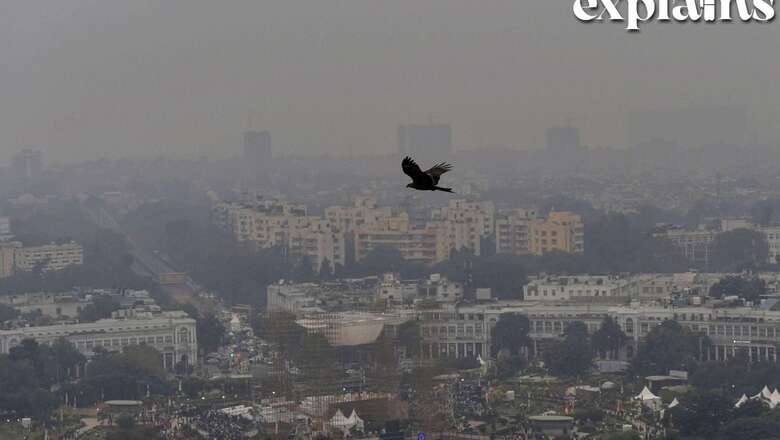
views
The air quality in Delhi, which was better in 2023 than the last eight years, has started to witness a downward trend as the pollution levels plummeted to ‘poor’ levels on Sunday.
The air quality index (AQI) in the national Capital was recorded at 233 in the ‘poor’ category for the fourth consecutive day on Sunday. The AQI is likely to improve to ‘moderate’ category as weather forecasters have predicted light rain and thundershowers in some places. The India Meteorological Department (IMD) has predicted overcast conditions and light rain at a few places accompanied with gusty winds.
Poor AQI After in Around 4 Months
New Delhi’s AQI dropped to the “poor” category for the first time in 114 days last week prompting the authorities to strictly implement measures under Stage 1 of the Graded Response Action Plan (GRAP).
The plan involved restrictions on the construction activities, diesel generator sets and checks on Pollution Under Control (PUC) certificates by vehicles. It also includes a ban on the use of coal in roadside eateries, hotels and restaurants.
The national capital has started seeing poor AQI on multiple days this month including four consecutive days from October 12 to 15. Though the AQI was at moderate level on Monday, it could return to “poor” once again by Wednesday, according to Early Warning System (EWS).
Why is Delhi’s AQI Rising
October is the time of the year when the issue of paddy stubble burning comes to haunt the city as the capital choke in a blanket of smog every winter. Stubble burning is a major contributor to the pollution in Delhi, particularly during the winter months.
The pollution from stubble burning in Punjab and Haryana contribute about 5-7 per cent to Delhi’s pollution load, but could worsen the AQI further if the wind is blowing down from the north.
The current surge of AQI this month could be attributed to the stubble burning as there has been a significant increase in crop residue burning incidents in the paddy harvesting in six agricultural states.
According to the Indian Space Research Organisation (ISRO) data, there has been a surge of 82% in fire incidents compared to last year during this period. The pollutants from the stubble burning can cause a range of health issues, including respiratory infections, heart disease, and cancer.
According to a study by the Centre for Science and Environment (CSE), vehicles may have contributed the most to air pollution in Delhi between October 21 to 26 last year. Delhi has over 9 million vehicles.
The pollution from vehicles caused half or around 51% of the national capital’s own contribution to PM 2.5 levels. However, the pollution rises significantly when the vehicular pollution adds to the air pollution from biomass burning in other NCR districts. Apart from vehicular emissions, other causes include residential sources, industrial sources and construction.
Seasonal factors
There are also natural causes like decreasing temperature and lower wind speeds during winter months which aggravates the pollution problem in New Delhi. During the winter months, airborne dust and contaminants become immobile. Due to stagnant winds, these pollutants get locked in the air and affect weather conditions, resulting in smog.
The level of PM2.5 is exceptionally high in winter and the reason is a lot of polluting activities increase during winter. Burning of biomass to warm up their homes and firecracker-related pollution because of festival like Diwali are some major factors.
Anti-Pollution Steps Being Taken
Delhi Environment Minister Gopal Rai has launched phase two of a sapling plantation drive in the city as part of efforts to reduce pollution during the winters. During the drive, 12 lakh saplings will be planted in the winter season to increase the green cover, which is currently 23 percent in the national capital. The environment minister also launched a month-long anti-dust campaign, which will go on till November 7.
Delhi government has created a pollution control plan known as the ‘Graded Response Action Plan’ (GRAP) which is implemented in the Delhi-NCR to combat air pollution during the winter season.
The government said that the air quality in Delhi has been the best in 2023 in the last 8 years excluding the Covid period.
During a press conference on October 9, AAP Chief Spokesperson Priyanka Kakkar said, “In 2022, the air quality in Delhi improved further by 8 per cent. In 2023, this improvement has reached 31 per cent.”
Delhi has also recorded 200 days of ‘good to moderate’ air quality this year so far, a first since 2015. The number of ‘good to moderate’ air quality days during the corresponding period in 2022, 2021 and 2019 stood at 154, 183 and 174 respectively.
















Comments
0 comment